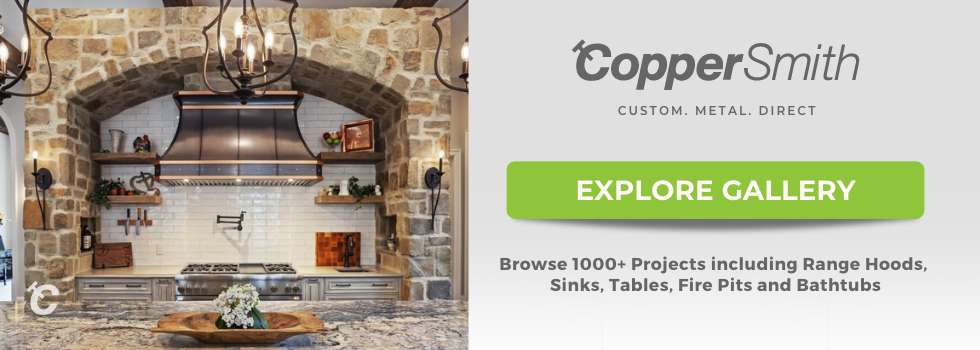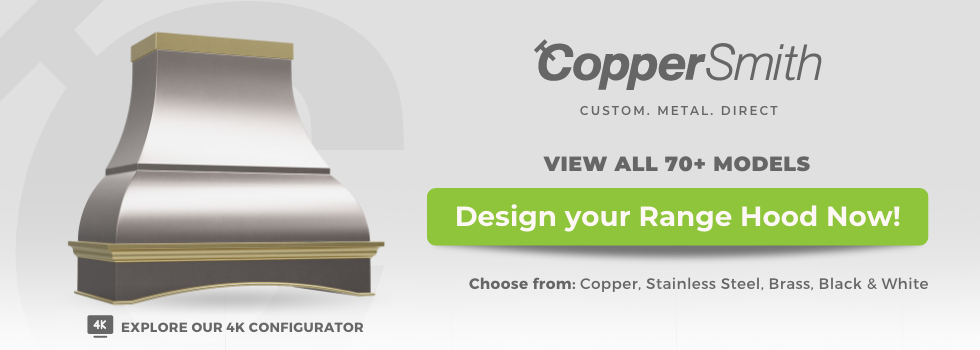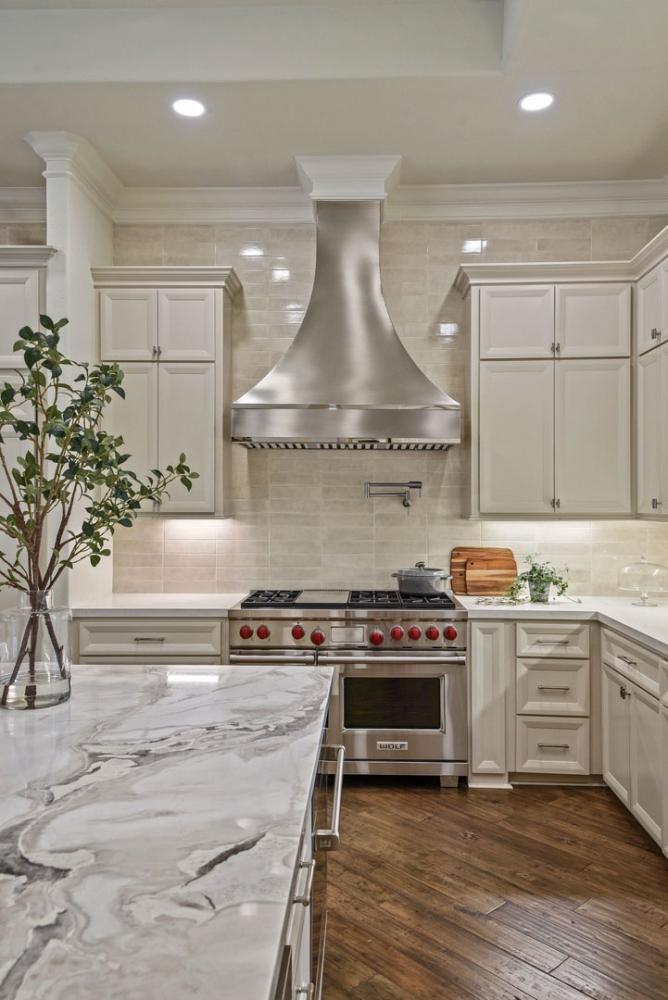
Range hoods serve a number of important purposes for your household, from providing an aesthetic appeal to your kitchen to replacing harmful airborne irritants and improving the cooking process. If you’re currently in the market for a high-quality range hood for your home, you should first familiarize yourself with some of the key technical terms that will assist in the purchasing process. Here are several range hood terms to know as you start your search.
Range hood
A range hood is a kitchen appliance that hangs above your cooktop and serves to eliminate airborne contaminants via a combination of filtering and air extraction. Range hoods are also commonly referred to as vent hoods and kitchen hoods. Careful placement of the range hood is essential. Putting it too high above the hob can allow noxious and dangerous gases to escape into the kitchen while placing it too low can interfere with cooking. Range hoods usually protrude about two to three inches less from the wall than the hob itself.
Ducted
A ducted range hood – also known as vented – provides ventilation from the range to the outside of your house. It completely removes irritants from the kitchen and works best if the range hood is mounted to an exterior wall. Ducted hoods work by using a fan to extract cooking gases out of your kitchen. Most have an exhaust that runs through the wall behind the cooker, or through the ceiling and out of the house.
The benefit of ducted range hoods is their ability to remove all gases from your kitchen, including strong odors from cooking. However, they also suck warm air out of the room, which may be one of the reasons some property owners choose re-circulating designs. They may also be unsuitable for apartment buildings without access to an exterior wall in the kitchen.
Ductless
Ductless ventilation – also known as non-ducted, ventless, or non-vented – sends air through a filter to remove irritants and then sends it back into the kitchen. It requires no duct work but the filter should be changed every few months. Ductless ventilation works well if the range hood isn’t mounted to an exterior wall.
Most ductless systems use charcoal filters. Smoke, grease, and odors rise from the food while it cooks and gets sucked into the hood by the extractor fan. The filter then strips the particles from the air, before pushing clean warm air back into the kitchen. This type of hood requires less installation work, often making it a more affordable option for new kitchens.
Downdraft
Downdraft is a type of range hood installation that is hidden within the range surface and pops up when in use to help remove irritants. It is connected to ducts beneath the floor.
Insert
An insert range hood is hidden in the wall or cabinetry above the range. It requires a custom fit and relies on power packs mounted and ducted within the system. Inserts minimize the appearance of your range hood and help it blend into the cabinetry. Prices for these typically vary from $400 to $1,500, making them suitable for most budgets.
Island
An island range hood descends from the ceiling above your island range. You can get these custom-installed and most exhaust air through the ceiling and then via ducting to an external vent.
Island range hoods can look impressive and function as the centerpiece of a kitchen. Many come with LED lights to improve visibility while cooking. They also offer powerful fans and are compatible with various ceiling heights.
Under-cabinet
Under-cabinet range hood placement attaches to the underside of cabinetry above the range and can be either ducted or non-ducted. These options are unobtrusive and hide ductwork from view, letting the equipment blend seamlessly with your kitchen décor. They also come with the same high-quality filtration and exhaust extraction systems and regular range hoods, which is why many homeowners choose them.
Wall-mounted
Wall-mounted range hood placement is also known as chimney-style and is mounted to the wall above the range.
Blower
A blower is also known as a fan and is the device that moves the air from above and around the range into the hood and then through the ventilation system. Types of blowers include:
- External blower
- Inline blower
External blower
An external blower is installed outside of the house to reduce operational noise. It requires an outdoor-rated enclosure.
Inline blower
An inline blower is also known as a remote blower and is installed outside of the range hood but inside the house. It reduces operational noise but doesn’t require an additional outdoor-rated enclosure.
BTU
BTU stands for British Thermal Unit and is the unit by which the heat output of gas-fueled appliances is measured. One BTU of heat has enough energy to warm a pound of water by 1°F. (In that sense, it is similar to a kilocalorie). You’ll often see gas ranges and cooking stoves quoting BTUs telling you how powerful they are. Electric cookers measure power in wattage.
You can usually check the BTU of a gas range in the owner's manual. You can also ask appliance store representatives for more information about the rating of an appliance. Most mid-range stoves offer between 2,000 and 10,000 BTUs, while more powerful options are 15,000 BTU+.
CFM and Sones
CFM stands for cubic feet per minute and is the unit by which the air movement of range hoods is measured. The Home Ventilating Institute recommends a minimum of 100 CFM per linear foot for wall-adjacent hoods and 150 CFM for island hoods. The CFM you need also varies according to the BTU of your range (or wattage equivalent). That’s because more powerful cookers have the potential to emit more smoke, cooking gases, and odors. For example, hoods above a 10,000 BTU gas stove should have a CFM rating of 500, meaning they can remove more than 500 cubic feet of cooking gases per minute.
A sone is the unit by which the noise level of a range hood is measured. 1 sone is said to equal the sound of a running refrigerator. A typical conversation is said to take place between 1 and 4 sones. The majority of range hoods operate between 6 and 10 sones, which equates to between 53 and 61 decibels. However, the actual noise yours generates depends on how well you look after the fan bearings, the type of fans you use, and whether you clean or replace the filter regularly.
Important information about range hood filters
A carbon filter is also known as a charcoal filter and is a cartridge filled with activated charcoal used to filter irritants from the air in your kitchen. It is required in ductless range hoods and removes other irritants after grease has been absorbed by the grease filter. You should replace your range hood’s carbon filter every few months. A grease filter is a cartridge filled with layers of metal mesh that trap airborne grease. It does not need to be replaced like a carbon filter does. A backdraft damper is a valve inside a range hood duct that opens during operation to allow air from inside the house to be exhausted outside. The damper closes when the range hood isn’t in operation to prevent outside air from entering your home. If your backdraft damper doesn’t function correctly, or you don’t have one, it can cause smoke and odors to remain inside your kitchen. It can also reduce the lifespan of your range hood by increasing the amount of work the motor has to do.
Capture area
A range hood’s capture area is the width and depth of the hood in relation to the cooktop below it. It is the area within which irritants will be captured and sent through the range hood. Your range hood’s capture area should be as wide as the range and should cover the entirety of the back burners and half of the front burners. When installing a capture area, you’ll want to leave a couple of inches between the cabinets on either side. Wood needs room to expand and contract to avoid damaging your hood
Chimney
The chimney is the part of the hood that extends from the hood toward the ceiling. It operates similarly to a regular chimney, helping to extract exhaust. Most range hood chimneys contain a series of fans, a motor, lighting, and a filter if non-vented. Chimneys should always exhaust gases externally or through a filter and recirculate them into the room.
Find your perfect range hood with CopperSmith
Knowing the terminology behind range hoods is just a starting point in selecting the perfect hood for your kitchen. If you feel overwhelmed by all of these terms, you’re not alone. A range hood is a big investment in your home, and it’s important to select the right one. Fortunately, we’re here to help. CopperSmith’s industry-leading collection of range hoods features an extensive variety of styles, shapes, and materials to find the perfect fit for your kitchen. Contact us today and discover the right range hood for your home.





